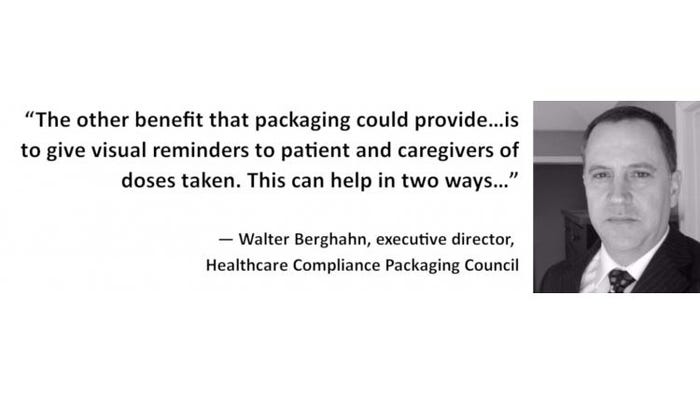How can unit-dose blister packaging curb opioid abuse?
Epidemic. Crisis. Abuse. Dramatic words that, unfortunately, aptly describe the current situation with opioid drugs in the United States. But we’re starting to fight back hard, and packaging may be a secret weapon to help us win some of the battles.
On May 30, 2019, the Food and Drug Administration asked for public feedback on a proposal that would require certain opioids be packaged in fixed-quantity, unit-dose blisters. This latest FDA action is just one answer to what is known as the SUPPORT law. The Substance Use-Disorder Prevention that Promotes Opioid Recovery and Treatment (SUPPORT) for Patients and Communities Act—enacted in the fall of 2018, with nearly a full sweep in the House (393–8) and in the Senate (98–1)—attacks the critical epidemic of opioid abuse facing America through a multi-pronged assault.
At the end of 2018, Packaging Digest identified “3 packaging designs that tackle the opioid crisis.” We now continue to explore timely solutions with a special session scheduled for EastPack 2019 (June 11-13; New York City).
On Wed., June 12, from 11:00 to 11:45 a.m., Walter Berghahn will present “Packaging Solutions for the Opioid Crisis” in Booth 2370. Berghahn is executive director for the Healthcare Compliance Packaging Council, not-for-profit trade association that advocates for greater use of unit dose and compliance packaging formats in the U.S. He is also president of SmartRmeds for Life, a consultancy service focused on promoting medication adherence in the supply chain.
Until then, Berghahn explains some of the packaging challenges/considerations related to opioids.
Are opioid manufacturers open to new packaging options that are designed to help prevent an opioid overdose? Why or why not?
Berghahn: In the last meeting I attended with FDA present, opioid manufacturers were pushing back on FDA and the requirement for blisters for initial (acute care) scrips. They were claiming that the tooling up to produce this form would be burdensome. They were concerned about blister capacity. They also felt that the number of forms that could be required—3 day, 5 day, 7 day—could create problems.
What are the packaging challenges pharmaceutical manufacturers face that are specific to opioids and how should these challenges be addressed?
Berghahn: The system as designed allows for the repackaging of pharmaceuticals in the pharmacy, an antiquated practice that has existed since the time when most pharmacies were compounding medications and hence packaging as well. No other country in the world repackages pharmaceuticals to the level that we do in the U.S. Other countries almost exclusively use the manufacturers package whether bottle or blister.
The other packaging challenge would be that the blisters in this case would be F-1 CR according to CPSC [Consumer Product Safety Commission] guidance. The F-1 CR package is certainly a bit more complicated to produce but is readily available in numerous forms.
How can unit-dose packaging help curb opioid abuse?
Berghahn: The concept behind the SUPPORT legislation is to reduce the excess supply of product in the market due to poor prescribing practices. Today, most scrips, due to insurance formulary, are written for 30 days. The healthcare community has come to the realization that this practice—which is fine for chronic treatment prescriptions—does not work so well for short-term acute-care events. Tooth extraction, a sprained ankle and such might require three to four days of opioids, but certainly not 30. The left-over doses are ripe for abuse, whether by the prescribed patient or by others in the household. They are all too frequently sold on the black market, as well.

The other benefit that packaging could provide, especially F-1 compliance packs, is to give visual reminders to patient and caregivers of doses taken. This can help in two ways: First, to help the patient avoid accidental overdosing, through better logging of doses taken and timing. Second, it can provide visual evidence of pilfered doses. When doses go missing from a blister card, it is much easier to track than in a bottle where one would literally need to dump out the contents and count to verify that some are gone.
If we take it a step further, smart packaging with integrated electronic chips/RFID could track doses taken and provide warning to caregiver in case of attempted overdose or pilferage.
About the Author(s)
You May Also Like




